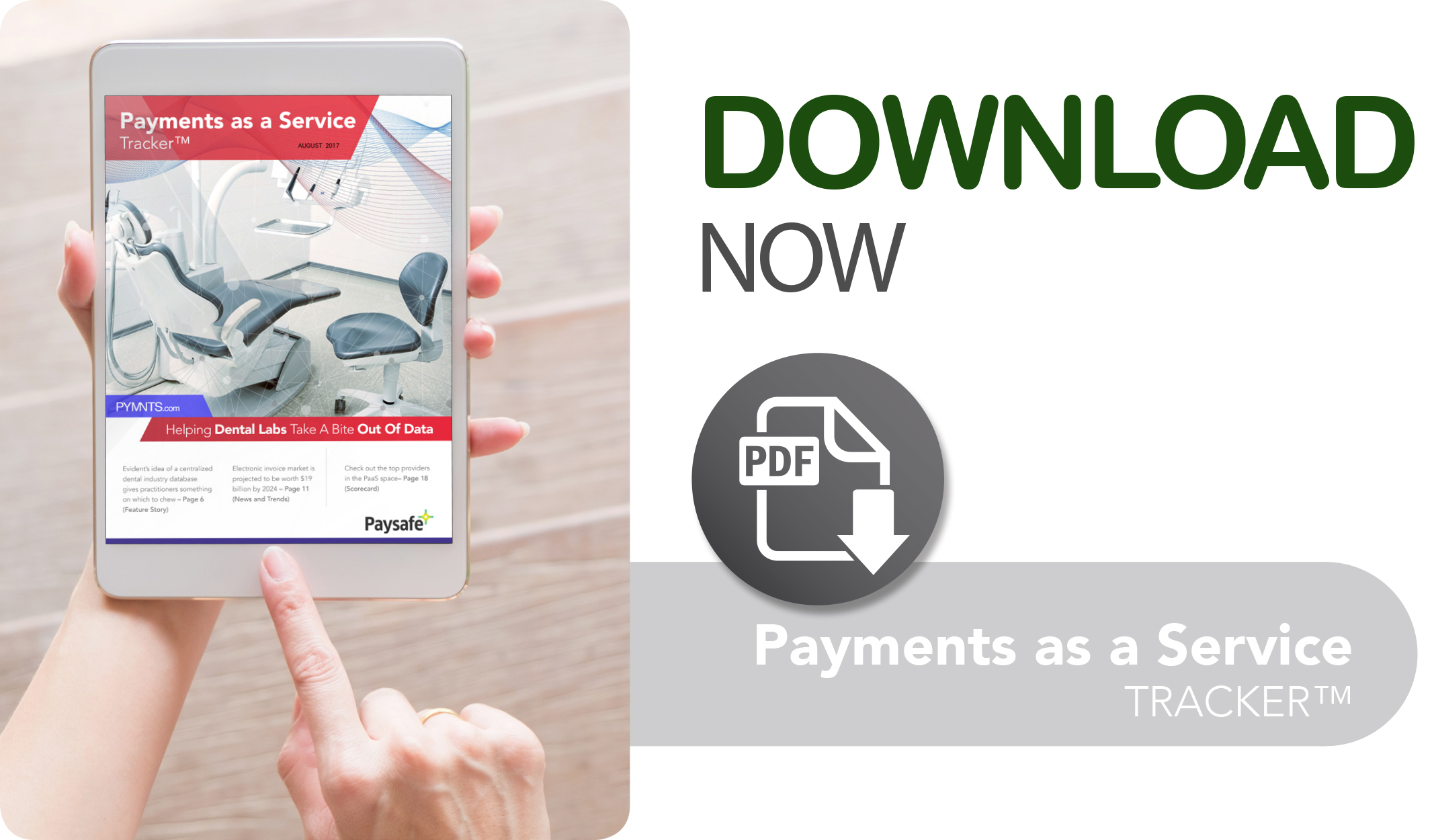NEW REPORT: Filling Dental’s Payments Data Gaps

New payment solutions are promising to deliver big changes to the small business community — both the brick-and-mortar and eCommerce varieties. With these systems in place, small- and mid-sized businesses (SMBs) are gearing up to challenge their larger counterparts through an improved payments experience, greater consumer engagement and leveraging the power of data to know their customers better than ever before.
The latest PYMNTS Payments as a Service Tracker™ showcases the solutions large and small businesses are embracing to offer convenience to customers while eliminating common payment frictions.
The latest in the PaaS world
In the last month, a host of tech giants ranging from Uber to Samsung partnered with emerging payment solutions to get a foot up on the competition.
In India, ridesharing giant Uber announced it will now allow passengers to pay for rides using the country’s new United Payment Interface (UPI). UPI’s partnership with one of the most popular ridesharing services in India and worldwide is a major step toward building its nascent brand.
Meanwhile, Samsung is reportedly considering offering its mobile payment solution, Samsung Pay, through competing smartphone brands. If Samsung moves forward with the idea, it would mark a major departure from the company’s previous strategy of limiting Samsung Pay access to its own devices.
Samsung Pay’s competitor ChasePay is also expanding its reach through a partnership between PayPal and its parent company JPMorgan Chase. The two companies are reportedly planning to expand upon their existing agreement to allow Chase-issued payment cards to be added to PayPal accounts. The move will likely help PayPal’s quest to improve acceptance in brick-and-mortar store locations.
Helping dentists drill down into Big Data
The need for dental care is poised to rise thanks, in part, to an aging population and an increase in return of people to the workforce. Fortunately, there are software solutions to reduce the amount of paperwork and eliminate common frictions in the payment process for dental office personnel. But can these systems be brought together as a centralized database to provide improved dental care and a seamless payment experience?
As it turns out, getting the dental industry on the same page is no easy feat. As Evident Healthcare Systems CEO Paolo Kalaw told PYMNTS, most dental practices continue to operate on fragmented software solutions hosted on local office servers and have input their data however they saw fit — making it nearly impossible to improve success rates of dental procedures.
The solution to getting the dental industry on the same page lies in mapping data from different legacy systems in the cloud, Kalaw said. A cloud-based centralized database can offer broader industry insights on how to improve patient care, find cost-saving opportunities and provide an error-proof payment solution.
“If we have a universal data set that we can look at, by analyzing that information … [dentists have] the tools to create efficiencies and deliver dental care for the future,” said Kalaw.
To read the full feature story and see who’s on top in our ranking of the best PaaS providers, download this month’s Tracker.
. . . . . . . . . . . . . . . .
To download the August edition of the PYMNTS.com Payments as a Service Tracker™, click the button below.
The PYMNTS.com Payments as a Service Tracker™ gives an overview of the trends and activities of merchant platforms that not only enable payment processing of new and old technologies, but also integrate with other features to improve the merchant’s experience, including customer engagement, security, omnichannel retail, analytics, inventory management, software and hardware management and more.

